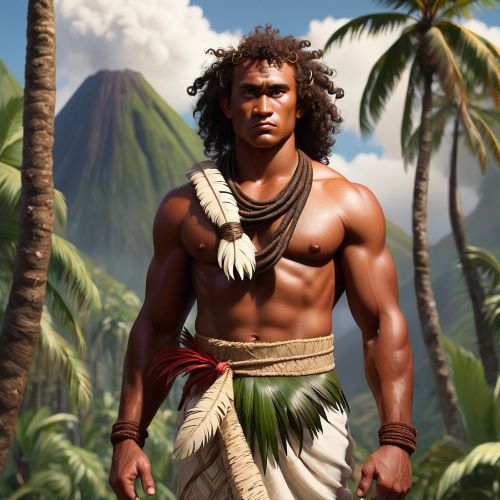Pohnpeian Mythology
Pohnpeian mythology, born from the lush volcanic island of Pohnpei in the Federated States of Micronesia, tells the story of creation, power, and sacred connection between humanity and the natural world. Known as one of the most spiritually rich traditions of the Pacific, Pohnpeian belief weaves together the divine, the ancestral, and the elemental in a living cosmology that still resonates through ritual, language, and landscape. To the Pohnpeian people, every stone, wave, and tree carries ancestral memory — and the myths of gods, heroes, and spirits are written into the very geography of the island.
According to Pohnpeian creation mythology, the world began in the ocean, where the gods shaped land from coral and sand. From the sea rose Pohnpei, the “stone altar,” created by the divine siblings Nahn Sapwe and Nahn Sapah. These celestial beings were said to have descended from the heavens, bringing wisdom, law, and sacred knowledge to humankind. Nahn Sapwe, the thunder god, became the island’s supreme deity — a symbol of cosmic justice and divine authority. He governs lightning, storms, and the moral order of the universe. When thunder echoes across the island, the Pohnpeian people remember it as the voice of Nahn Sapwe, reminding them of their duty to live with honor, humility, and respect for nature.
Many of Pohnpei’s sacred sites, such as Nan Madol, the mysterious city built on coral islets off the island’s coast, are intimately tied to these myths. Legends say Nan Madol was constructed by twin sorcerer brothers, Olosohpa and Olosihpa, who used divine powers to raise massive basalt columns from the sea. They came from a mystical land to the east, guided by the will of Nahn Sapwe, to establish a sacred center of worship and governance. The site later became the seat of the Saudeleur Dynasty, whose rulers claimed divine ancestry — blending myth, religion, and history into a unified spiritual narrative.
The Pohnpeian pantheon also includes deities tied to the sea, fertility, and craftsmanship. Water spirits govern the island’s lagoons and reefs, while nature guardians protect the breadfruit trees and taro fields essential for survival. Ancestral spirits remain ever-present, influencing dreams, weather, and harvests. Rituals of song, dance, and offering maintain harmony between these realms, affirming the Pohnpeian belief that the material and spiritual worlds are inseparable. Even the island’s distinctive social hierarchy echoes cosmic order — chiefs are seen as stewards of divine authority, maintaining balance through just rule and communal harmony.
Beyond religion, Pohnpeian mythology is a living record of ecological wisdom and cultural identity. The myths teach respect for the ocean as both life-giver and destroyer, for the land as sacred inheritance, and for ancestors as eternal companions in the ongoing story of creation. In every thunderstorm, ocean wave, and stone monument, the island still speaks the language of the gods. Pohnpeian mythology endures as a poetic and spiritual reminder that humanity’s truest roots are not only in the soil beneath our feet, but in the sea and sky from which we were born.


